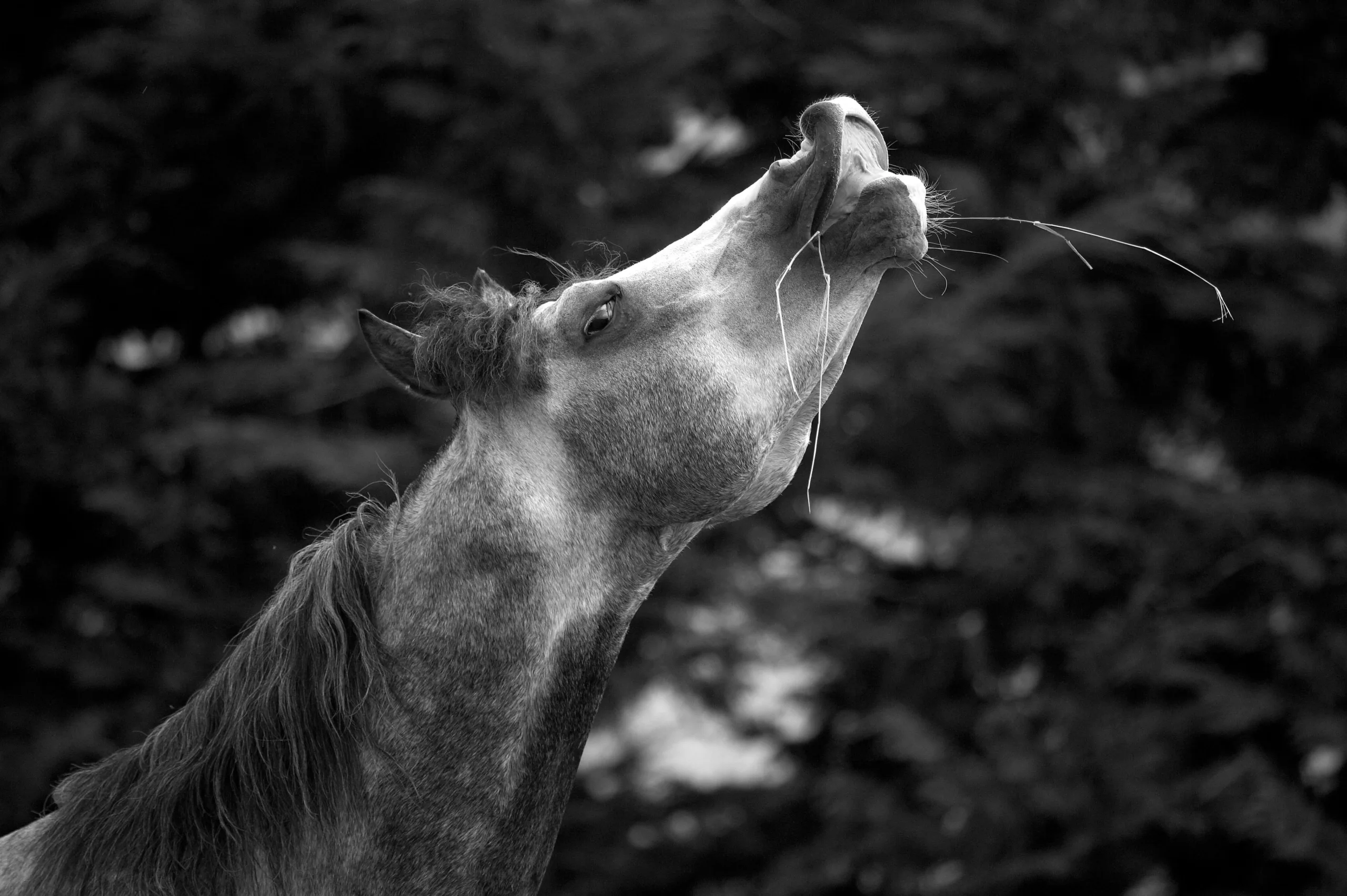Recent advancements in research and the development of ethograms cataloguing signs of pain are casting light on what has long been an area of silent suffering for horses. Over the past decade, numerous studies have confirmed specific facial expressions and behaviours that typically indicate pain in horses. However, cultural influences steeped in centuries of art have normalised and even romanticised these very signs—such as wide eyes, gaping mouths, and hyper-flexed necks—leading to their acceptance in horse sport. As a result, even clear warning signs like pinned ears, tail swishing, and pawing are frequently overlooked or misinterpreted as ‘bad behaviour’.
Anthropomorphising horses has undoubtedly helped foster a deeper connection between humans and equines. Nonetheless, it has also perpetuated harmful myths, such as the notion of horses ‘scheming’ to avoid work or plotting against riders. Such misinterpretations can lead to dismissing genuine signs of discomfort, labelling mares as ‘mare-ish’, or labelling certain horses as inherently grumpy. However, horses lack a highly developed frontal lobe, making it impossible for them to scheme and fake injuries or to be inherently ‘grumpy’.

Did you know?
There is also no scientific basis for associating a horse’s coat colour with their behaviour, i.e. a chestnut is not ‘just a fiery redhead’.
A change in understanding
As prey animals, horses are masters in disguising their discomfort. To be the horse in the herd that shows weakness means to become vulnerable to predators, so horses will do everything in their power to ‘soldier on’ as usual.
Often, the first indication that a horse is experiencing discomfort is a change in behaviour, whether subtle, like tail swishing or more pronounced, like head tossing and teeth grinding. Horses may show irritability when being groomed or tacked up, refuse to stand still at the mounting block, or exhibit changes in movement, such as rushing or reluctance to move, which can escalate to kicking, bucking, or rearing. While discomfort is commonly expressed through behaviours or potential training challenges, the root causes can be diverse and must be thoroughly investigated and addressed to prevent worsening conditions.

Recognising pain in horses
Sue Dyson, a renowned equine veterinarian, highlighted in a webinar hosted by World Horse Welfare that musculoskeletal pain is more common in horses than is often realised. As noted above, horses are naturally inclined to hide their vulnerabilities, making it easier to diagnose pain rather than rule it out. They compensate for pain through subtle and noticeable changes in their posture and movement. Regrettably, many horse owners and caretakers fail to recognise these signs of pain.
During the webinar, a study was cited that found that caretakers at equestrian centres grossly underestimated the prevalence of back pain in their horses by 37-85%. Interestingly, centres where caretakers overestimated pain had fewer horses actually suffering from it, and centres where caretakers felt horses were ‘fine’ had the highest percentage in pain. Overall, of all the horses evaluated, nearly 50% suffered from back pain. These results suggest that it is always worth giving horses the benefit of the doubt if pain is suspected, as the likelihood that pain is an issue is high.
Early identification and management
Recognising the ‘pain face’ in horses – characterised by specific features such as triangulation of the eyes, tension in the muzzle and chin, widening of the nostrils, a tense stare, and low or asymmetrical ears – can empower owners and trainers to seek timely intervention.
Additionally, the 24 behaviours identified in the Ridden Horse Pain Ethogram (RHpE), developed through extensive research by Dyson and her team, can indicate musculoskeletal pain. These behaviours are ten times more common in horses suffering from pain and include ear pinning, rearing, and head tilting. Dyson and her team confirmed that if a horse exhibited an RHpE score of more than 8/24, the horse was in pain. Even with scores of less than 8, some horses were found to be in pain. These findings were confirmed with immediate and significant reductions in RHpE scores when the horses were temporarily nerve-blocked to relieve their pain.

Did you know?
The flehmen response (curling of the upper lip) – more widely recognised as a means for a horse to analyse smells – is a potential pain sign. It is particularly worth noting the circumstances under which a horse exhibits this behaviour as it is known to indicate gastric discomfort and should be taken seriously, especially if associated with signs of digestive upset or colic.
A better future
Understanding these signs and advocating for a comprehensive evaluation when any of these behaviours are observed can prevent the worsening of conditions and promote better welfare and safety for both horses and riders. Shifting towards a more informed and compassionate handling of horses is crucial for fostering a healthier relationship with these magnificent animals and ensuring their well-being.

